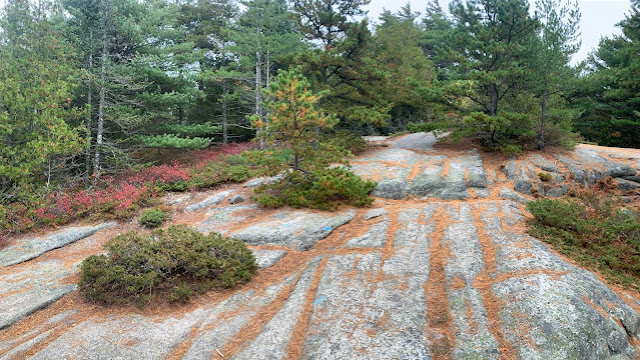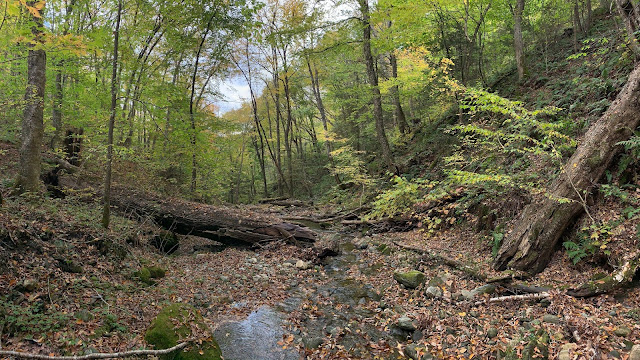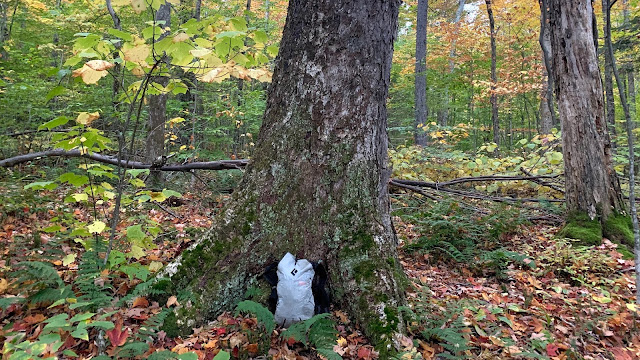Total Pageviews
Friday, October 9, 2020
The King of Maine
Thursday, October 8, 2020
Big Reed Forest Preserve
This morning, I woke up at 7am in a Hannafords parking lot out in Bar Harbor, ME. A strong cup of coffee later, and I was en route to Big Reed Forest Reserve in northern Maine, which is the largest contiguous virgin forest in New England. In total, it took over 5 hours to get there - 2 of which were spent driving on 75 miles of dirt logging road. Although I visited last year, I hadn’t had a chance to explore as much as I wanted. Today, I saw the best example of true virgin forest of I’ve ever experienced, and that’s saying a lot. Giant sugar maple, red spruce, American beech, American ash, slippery elm, white pine, and yellow birch were large, spaced out and in some cases dying of old age. Because of the harsh northern conditions, old-growth trees here are often smaller than found in points south, though, every so often you’ll see a giant. The preserve holds the largest red spruce, hop hornbeam and slippery elm I’ve ever seen. In fact, some hop hornbeam here has been dated to 400 years old! When you enter the forest, you immediately see deep tip-up mounds from giant trees fallen over. You notice fungi everywhere, and large tall trees with gnarly wind-swept crowns and trunks straight as an arrow. Despite the near dearth of people who visit or even know about this site, and it’s distance from any nearby town, American beech is nearly entirely gone from sudden beech bark disease, which humans introduced to America; and the increase in moose herbivory was all around due to human’s eliminating its main predators. Thus, this is one glaring example that humans don’t have to directly touch a site for these larger anthropogenic stressors to impact them.
Wednesday, October 7, 2020
Acadia in Autumn
Monday, October 5, 2020
Berkshires’ Mohawk Trail Primeval Forests
Today, I woke at 3:00am at a trailhead in Keene Valley, NY ready to explore old growth forest in the Berkshires. I headed for the historic Mohawk Trail and searched for coordinates of some of the only remaining primeval forest in Massachusetts. Giant beech, sugar maple, ash and black cherry few in patches along a steep northeast slope. I saw striped maple, mountain maple, and hobblebush in the understory; and owl pellets and early American artifacts on the way out.
Sunday, October 4, 2020
Old Growth Beech-Maple-Birch
On my way down from Cliff and Redfield mountains, I came across some stellar old growth red maple-sugar mable-beech-basswood forest. In fact, it’s the best example I’ve ever seen. Towering trees spaced far apart with downed nurse logs, standing dead wood, pit and mounds, and all the other fixings that make old growth what it is. The patch was right off trail between Marcy Dam and the Adirondack Loj. I’ve never seen such large red maple or basswood in a northern hardwood forest. The sweet birch I saw was so large and old that it’s bark was plate-like and form was straight as an arrow with gnarly branches. One of the smaller downed sugar maples was cut with a chainsaw as it lay across the trail, so I counted its rings to be around 350 years old. I estimate the sweet birch to be close to 500 years old. What a treat!
Cliff and Redfield
Hot damn, it’s mud season in the Adirondacks! Woke up too late to do the giant 32-mile, 5-peak day as planned. So I tackled just Cliff & Redfield for 18 miles and 4,602 elevation gain. I jogged the entire way in just over 7 hours. The foliage is waning, but the mud is waxing after the recent rains. My shoes are waterlogged and every bone in my body hurts, so it was a successful day. I’ll only have three peaks left to finish the northeast 115, thereby completing the Adirondack 46 in one season. Out of all the mountain ranges, this is by far the most grueling. The trails are not always well marked, summits are much farther on average, and the terrain is unforgiving! But I wouldn’t want it any other way.




































